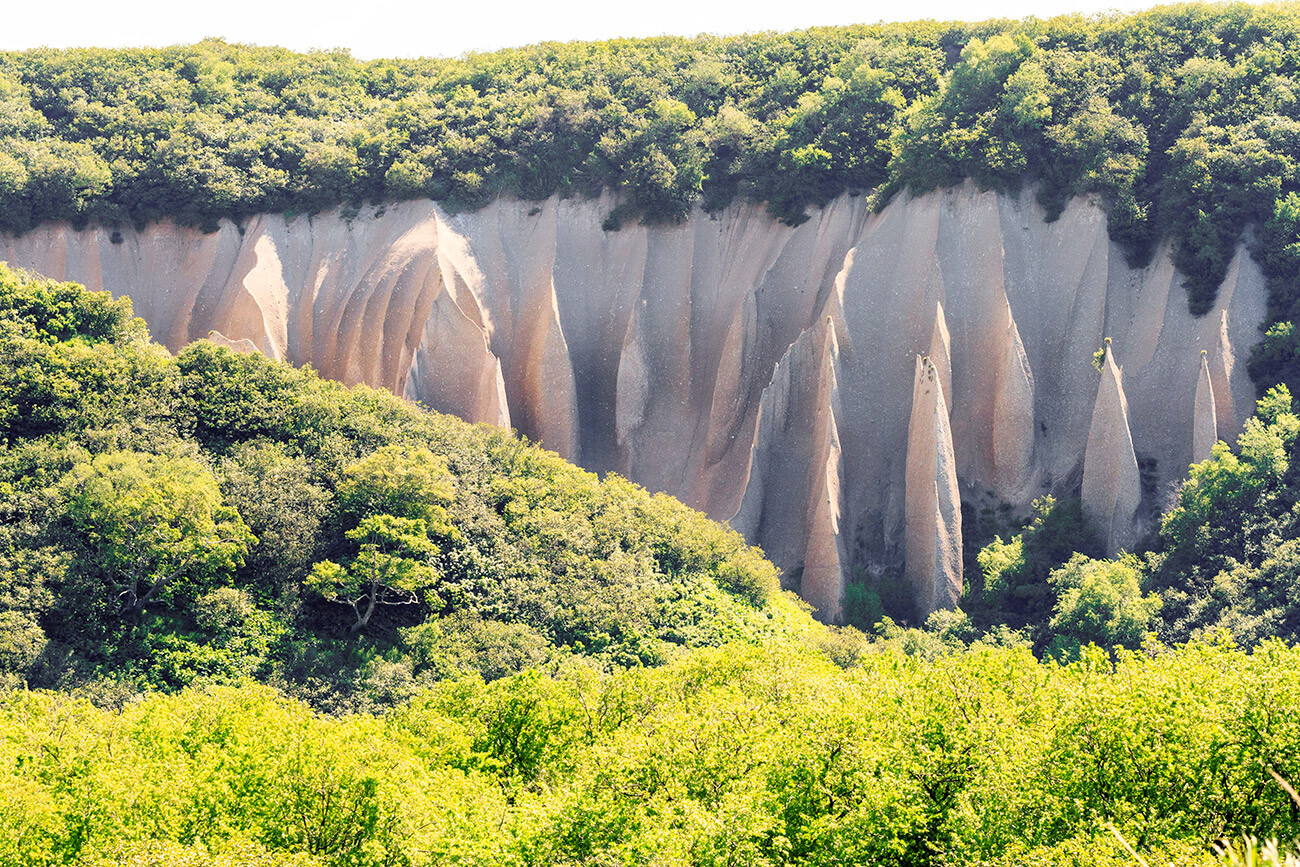Check out the wondrous pumice cliffs of Kamchatka (PHOTOS)


1. The Kronotsky Nature Reserve in southern Kamchatka is a favorite place of sociable bears (read about them here). The white cliffs, called Kutkhiny Baty, are one of the natural attractions of this wildlife sanctuary.

2. They are located about 4 km from the Kurile Lake in an incredibly picturesque place and look like giant pumice formations.

3. These cliffs are up to 110 meters high and 12 to 30 meters thick. The color varies from snow white to ochre, and these small mountains are literally crumbling in your hands. But where does the pumice come from?

4. Kamchatka is the land of many active and extinct volcanoes. Thousands of years ago there were eruptions here, and the landscape was very different.

5. Pumice is a porous formation of solidified gas-saturated lava. Centuries later, the earth covered the site, woods grew, and streams and winds began to "sharpen" the soft pumice, giving it magnificent shapes.

6. Geologists estimate that these cliffs began to form about 8,000 years ago and are at least 5,000 years old in their present form.

7. Besides natural factors, there is also a legend. These places are inhabited by the Itelmen, a people related to Native Americans, and the name, Kutkhiny Baty, was given to it by the indigenous peoples.

8. Kutkh is a key figure in local fairy tales. He was busy creating the world, and in his spare time he liked to fish on the shores of Kurile Lake, which is full of fish. Every time after fishing he used to pull out his boat to dry on the shore, but when he returned, so much time had passed (Kutkh was very busy) that the boat turned to stone and he had to get a new one.

9. This legend was recorded in the 18th century by the explorer of Kamchatka Stepan Krasheninnikov, one of the first outsiders to describe this place. From above, it really seems that these sharp cliffs look like fishing boats lined up in a row. In fact, ‘baty’ is the name of a canoe used by the locals in Kamchatka.

10. If you want to see the Kutkhiny Baty with your own eyes, you need to go on a multi-day hike with a group of people who are equally enthusiastic, because there is no transportation there.



